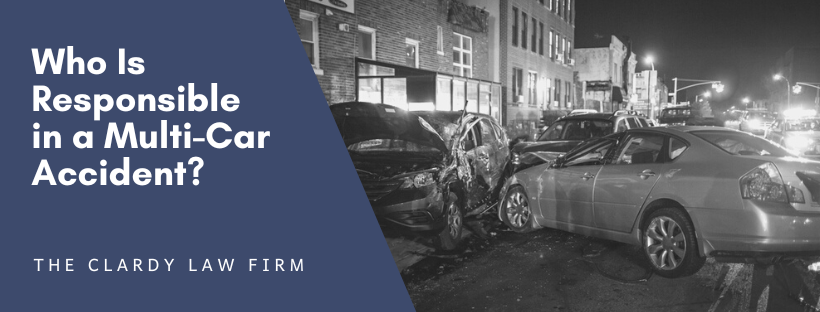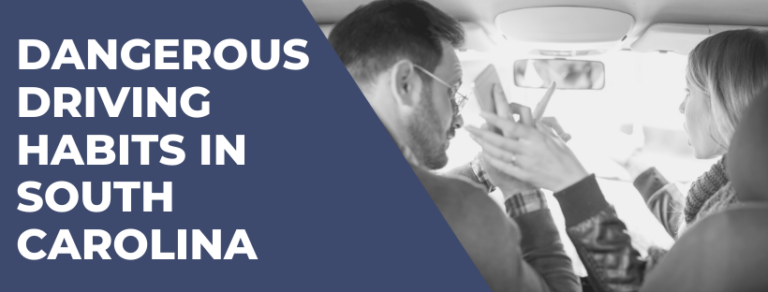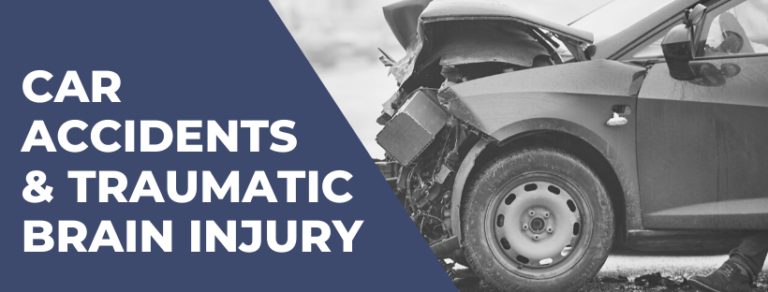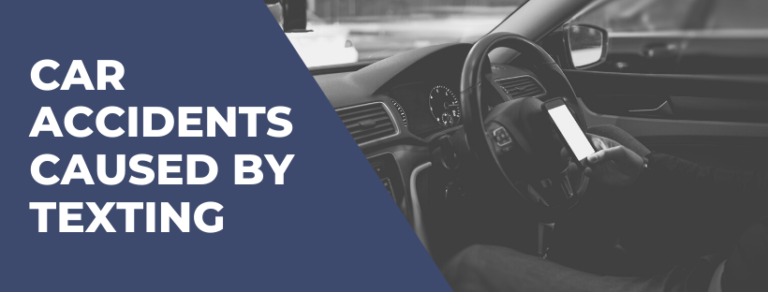Multi-car or multi-vehicle accidents — crashes involving three or more vehicles — are complex and confusing, especially when it comes to figuring out who is responsible.
Contrast a relatively straightforward accident involving two cars with a three-car pile-up. In the former, it might be quite easy to determine who caused the crash, especially if one driver is intoxicated or texting on their phone. In the latter, it can be a lot harder to determine fault, especially if all three drivers end up causing damage.
But when it comes to filing a personal injury claim in South Carolina and recovering compensation for your injuries and losses, determining liability is a crucial piece of the puzzle.
Our car accident lawyers look at who is responsible in a multi-car accident and how it can impact the compensation you’re entitled to.
How Is Multi-Car Accident Fault Determined?
Several key factors help determine who is responsible in a multi-car accident, but first, it’s helpful to understand what “fault” means under the law.
A person or party can be at fault for an accident if they are negligent or reckless. Negligence means failing to exercise reasonable care, and it takes many forms. In an auto accident, negligence can look like driving while distracted (neglecting pedestrians and others on the road) or failing to follow traffic signals.
Recklessness is arguably the worse of the two, though both can result in severe, even life-changing injuries. While a person may be negligent without intending to hurt anyone or realizing their actions could cause harm, a person engaging in reckless behavior is fully aware of the potential consequences of their actions and intentionally disregards the safety of others. Examples of recklessness in a multi-vehicle crash include speeding, brake testing, and weaving in and out of traffic.
When determining who might be responsible for a multi-car crash, it can be helpful to ask the following questions:
- Was one or more people or parties engaging in reckless or negligent behavior?
- What were the road conditions like? For example, did one driver hit a pothole or lose control of their vehicle at a sharp turn, or were the roads slick from heavy snow or rainfall?
- Did a defective car part contribute to the crash (such as a blown tire or faulty brakes)?
It’s important to consider the answers to all of these questions when determining fault. For example, in inclement weather conditions, motorists are required to take particular care to avoid skidding on the road, such as driving more slowly than they would if the road was dry and clear. This means a driver may be liable for a crash even if they’re not speeding.
In another example, a driver might navigate a turn and oversteer, causing them to veer into traffic. If the driver was speeding into the corner, they would likely be liable for the crash, as the accident occurred because of their reckless behavior. However, if the driver wasn’t speeding, but the turn is so inadequately designed that it causes oversteer even when drivers are acting lawfully, the government agency responsible for designing the road might be at fault.
What If Multiple People Share Fault for a Multi-Car Accident?
In some cases, more than one person or party might be at fault for a multi-car accident. This is what largely makes this type of accident so complex.
The best way to illustrate shared fault is with an example scenario.
“Driver A is driving 65 mph in a 45 mph zone on a busy road in heavy rain. They lose control of their vehicle and hit Driver B’s car. This causes Driver B to collide with Driver C’s car. Driver B was driving at 45 mph — on the limit — while Driver C was taking precautions in the inclement weather and driving at a slower speed. An investigation after the accident finds that the brakes in Driver B’s car were worn, changing their effectiveness.” |
In this case, Driver A might be found 80% liable for the accident for speeding and causing Driver B to hit Driver C. But why might Driver A not be found 100% liable? The reason is Driver B may also share liability.
We know that Driver B was driving on the limit, but we also know that the weather conditions were so severe that they should have slowed down appropriately. Driver B’s brakes were also worn. Had Driver B been driving more slowly and gotten their brakes fixed, they may have been able to avoid crashing into Driver C.
The result might be that Driver A is found 80% liable for the accident, with Driver B 20% responsible.
This is just an example, and the percentages of fault in a multi-car accident can vary based on several factors.
How Shared Liability Impacts Compensation
The percentage of fault in a multi-car accident can also impact how much compensation you might receive.
Every state has negligence laws, which determine whether or not you can recover compensation if you are partly responsible for an accident — these are:
- Contributory negligence — you cannot recover compensation if you are at all liable for the accident
- Modified comparative negligence — you can recover compensation if you are partly responsible for an accident, as long as your fault falls under a state-specific cap
- Pure comparative negligence — you can recover compensation even if you are majorly at fault.
In states with modified or pure comparative negligence laws, any compensation you’re entitled to will be reduced by your level of fault.
South Carolina has modified comparative negligence laws, which means you can recover compensation as long as you are less than 51% responsible for your multi-car accident.
Let’s take the above example to show you how compensation works.
If you’re Driver A and you’re 80% responsible, you wouldn’t be able to recover compensation from Driver B, as your level of fault falls outside the threshold. However, if you’re Driver B (20% responsible) and you accept a settlement of $100,000, you’ll receive the remaining 80% — or $80,000.
If you’re Driver C in this scenario, you can recover compensation from all liable parties.
Can Someone Be Liable in a Multi-Car Crash without Direct Contact?
In some cases, a party may be liable for a multi-car accident even if they did not directly hit another vehicle. This can happen if a driver causes a chain-reaction accident by suddenly stopping or swerving or if they were behaving recklessly, and this contributed to the accident.
Let’s look at another example.
| “Driver A is speeding and runs a red light. Driver B swerves to avoid the collision and hits Driver C. This causes both cars to spin and hit other vehicles, leading to a multi-car pile-up.” |
In this case, Driver A might be majorly responsible for the crash — even though they didn’t directly hit anyone — because Drivers B and C likely wouldn’t have crashed had Driver A not run the red light.
What to Do If You’re in a Multi-Car Accident
If you’re in a multi-car accident in South Carolina, it’s crucial to speak to a dedicated car accident lawyer.
As we’ve seen, the question of who’s responsible can be complicated when multiple vehicles are involved.
A car accident attorney can speak with witnesses and other drivers involved to gather evidence to prove fault, which is crucial for recovering compensation.
This might include the police report filed by officers at the scene, medical records proving your injuries and costs, and accident reconstructions from experts.
Our Greenville personal injury lawyers can also negotiate a fair settlement, so you get the compensation you deserve.
If you need help determining who is at fault for a multi-car collision, contact our car accident lawyers in Greenville, South Carolina.





